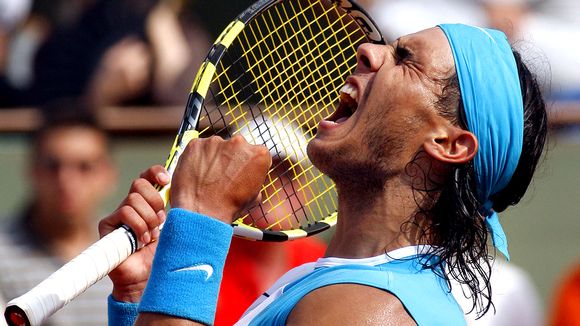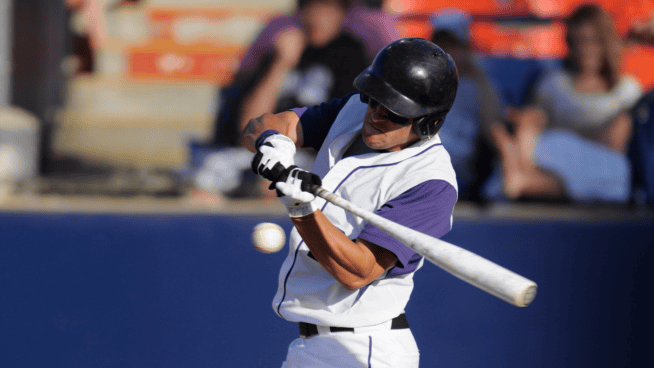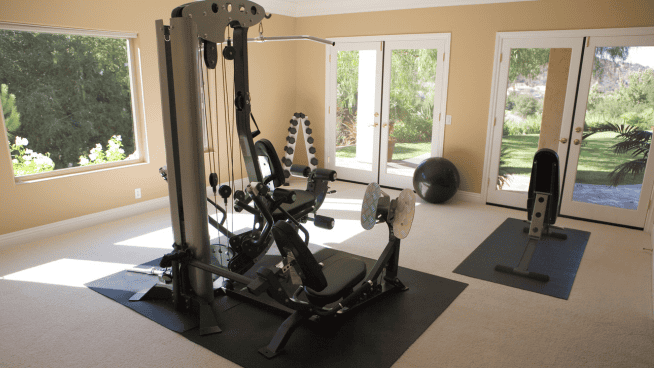Locker Room Quote of the Week: January 17
“You don’t have to be mad to be intense.”
—Rafael Nadal, Current Top-Ranked Tennis Player in the World
In all sports, the mental energy expended during competition has a direct bearing on the final result. Just as keeping your cool doesn’t mean playing lackadaisically, getting emotionally upset doesn’t necessarily increase your level of intensity. The middle ground of being calm and intense [an oxymoron of sorts] is where all great athletes seek to be.
Emotions can run wild during a contest. Anger may hype the level of intensity, but it can also hinder an athlete’s focus. We at STACK encourage athletes to play with passion, but there is a fine line between passion and rage, which all of us need to respect.
Getting upset about little things that occur during a game creates negative emotions that can lead to negative outcomes. Late hits, flagrant fouls and even the rare fight [not that rare in hockey] are almost always the direct result of someone getting angry—not intense. They can damage an athlete’s reputation as well has his or her team’s performance.
The key is to be calm and collected while exceeding your opponent’s intensity level. True, this is easier said than done. But great athletes always seem to rise to the occasion, bringing the intensity of their play higher than their opponents’, while never forgetting their roles as players.
A great example of a calm, intense athlete is the man with the quote—Rafael Nadal. During every match, “Rafa” lets loose strong emotion, yelling and clenching his fists during both good and bad volleys. His intensity levels are much higher than his opponents, but he still hits the ball with power and accuracy.
Some may think that Nadal is angry at opponents and outcomes, but it’s quite the opposite. He’s actually honing in his focus while channeling intense energy levels.
Though he may not look calm, deep down Nadal knows exactly what he’s doing, and he doesn’t get flustered when a match is on the line. His secret? Trying to simulate intense matches every day during practice.
“It’s difficult to practice the pressure of a fifth set of a Grand Slam,” Nadal told SI reporter Jon Wertheim. “But if you practice your whole life with high intensity, staying there mentally when the big moment arrives is less difficult.”
Nadal’s long, strong, intense training regimen obviously paid off. It started at a young age when his uncle/coach made him practice with few water breaks and spend extra time on the court when the weather was at its hottest. Rafael Nadal has now won nine of the 11 Grand Slam Finals he has reached and 43 career titles. His won-lost record [475-102] is an astonishing 82.3 percent. And guess what? He’s only 24 years young, just reaching his prime.
Source: sportsillustrated.cnn.com
Photo: backseatfan.com
RECOMMENDED FOR YOU
Locker Room Quote of the Week: January 17
“You don’t have to be mad to be intense.”
—Rafael Nadal, Current Top-Ranked Tennis Player in the World
In all sports, the mental energy expended during competition has a direct bearing on the final result. Just as keeping your cool doesn’t mean playing lackadaisically, getting emotionally upset doesn’t necessarily increase your level of intensity. The middle ground of being calm and intense [an oxymoron of sorts] is where all great athletes seek to be.
Emotions can run wild during a contest. Anger may hype the level of intensity, but it can also hinder an athlete’s focus. We at STACK encourage athletes to play with passion, but there is a fine line between passion and rage, which all of us need to respect.
Getting upset about little things that occur during a game creates negative emotions that can lead to negative outcomes. Late hits, flagrant fouls and even the rare fight [not that rare in hockey] are almost always the direct result of someone getting angry—not intense. They can damage an athlete’s reputation as well has his or her team’s performance.
The key is to be calm and collected while exceeding your opponent’s intensity level. True, this is easier said than done. But great athletes always seem to rise to the occasion, bringing the intensity of their play higher than their opponents’, while never forgetting their roles as players.
A great example of a calm, intense athlete is the man with the quote—Rafael Nadal. During every match, “Rafa” lets loose strong emotion, yelling and clenching his fists during both good and bad volleys. His intensity levels are much higher than his opponents, but he still hits the ball with power and accuracy.
Some may think that Nadal is angry at opponents and outcomes, but it’s quite the opposite. He’s actually honing in his focus while channeling intense energy levels.
Though he may not look calm, deep down Nadal knows exactly what he’s doing, and he doesn’t get flustered when a match is on the line. His secret? Trying to simulate intense matches every day during practice.
“It’s difficult to practice the pressure of a fifth set of a Grand Slam,” Nadal told SI reporter Jon Wertheim. “But if you practice your whole life with high intensity, staying there mentally when the big moment arrives is less difficult.”
Nadal’s long, strong, intense training regimen obviously paid off. It started at a young age when his uncle/coach made him practice with few water breaks and spend extra time on the court when the weather was at its hottest. Rafael Nadal has now won nine of the 11 Grand Slam Finals he has reached and 43 career titles. His won-lost record [475-102] is an astonishing 82.3 percent. And guess what? He’s only 24 years young, just reaching his prime.
Source: sportsillustrated.cnn.com
Photo: backseatfan.com












